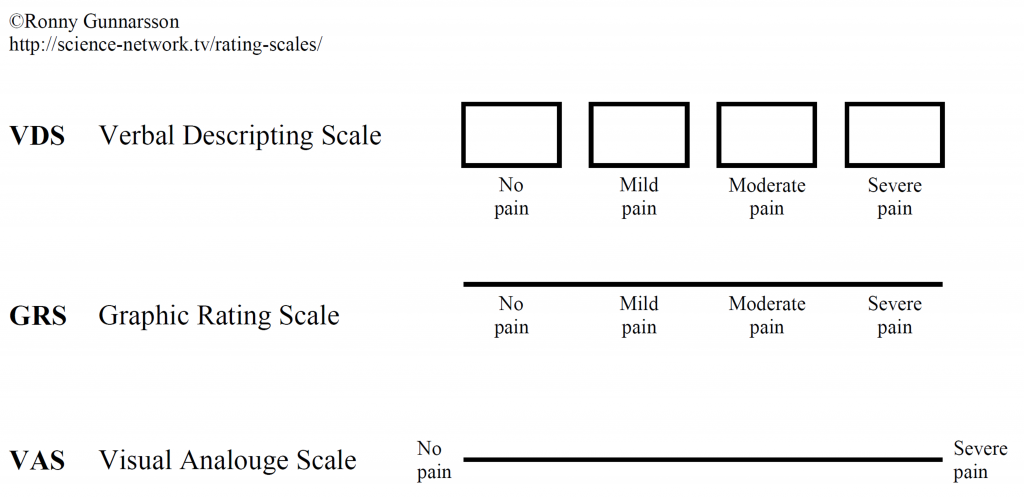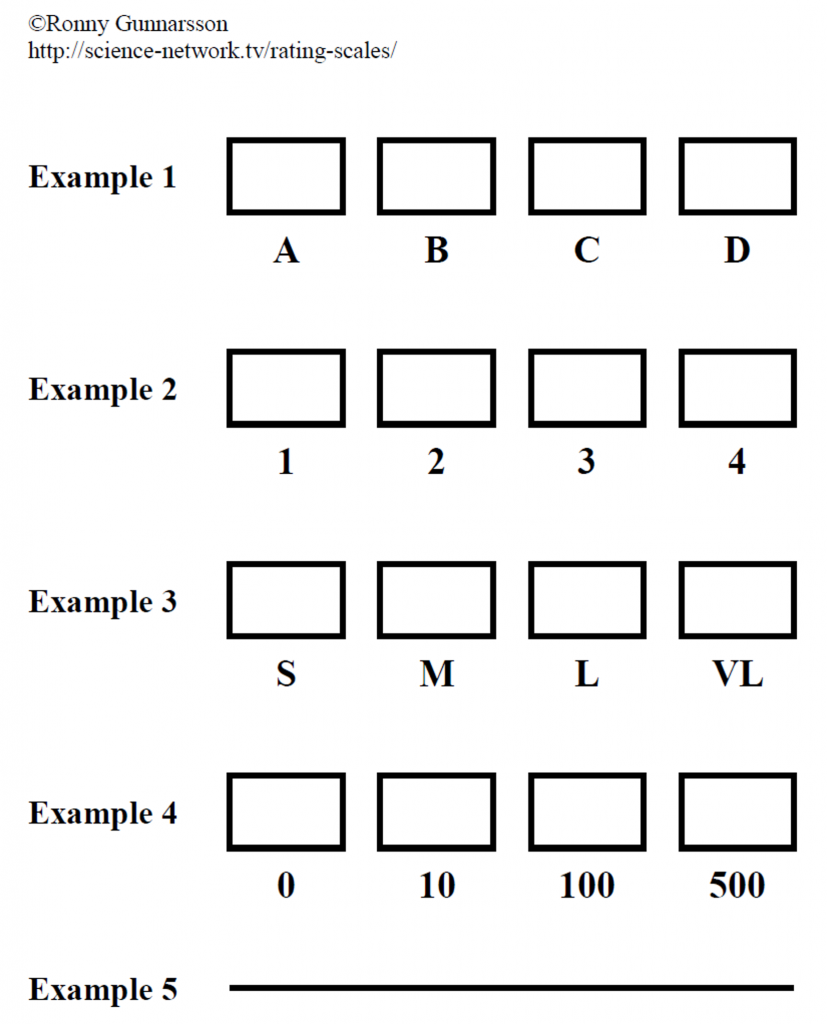Ronny Gunnarsson. Rating scales and their statistics [in Science Network TV]. Available at: https://science-network.tv/rating-scales/. Accessed July 27, 2024.
| Suggested pre-reading | What this web page adds |
|---|---|
| This web-page describes the use of rating scales and special considerations for choosing statistical analysis. Reading this will give you an understanding of using rating scales and how to calculate relevant statistics. |
(This page was first published in Swedish 1999 and has been updated a number of times since then. An English translation is under construction and will gradually appear here.)
Table of Contents (with links)
Introduction to rating scales
Can attitudes, feelings and emotions be transformed to numbers?
You are using a specific empirical-atomistic epistemological approach labelled positivism when you measure and analyze attitudes, feelings and emotions using quantitative methods (numbers). Representatives for the human sciences raised criticism around the early 20th century towards the practice of turning subjective phenomenons like attitudes, feelings and emotions into objective numbers and statistics. They argued that research on people’s attitudes, cultural and social life works according to other principles and are not accessible using the positivistic approach. This is a debate that is still alive and it might be a good idea to be aware of this.
Using rating scales
(This section is still under construction. Sorry for the inconvenience.)
Operationalization
(This section is still under construction. Sorry for the inconvenience.)
(This section is still under construction. Sorry for the inconvenience.)
(This section is still under construction. Sorry for the inconvenience.)
Presenting change using rating scales
(This section is still under construction. Sorry for the inconvenience.)
Estimating associations using rating scales
(This section is still under construction. Sorry for the inconvenience.)
Conflict of paradigms! How should I choose?
(This section is still under construction. Sorry for the inconvenience.)
What about sumscores?
(This section is still under construction. Sorry for the inconvenience.)
Choosing inferential statistics when rating scales are involved
(This section is still under construction. Sorry for the inconvenience.)
Practical examples worked up
(This section is still under construction. Sorry for the inconvenience.)
References
(This section is still under construction. Sorry for the inconvenience.)
Ronny Gunnarsson. Rating scales and their statistics [in Science Network TV]. Available at: https://science-network.tv/rating-scales/. Accessed July 27, 2024.




